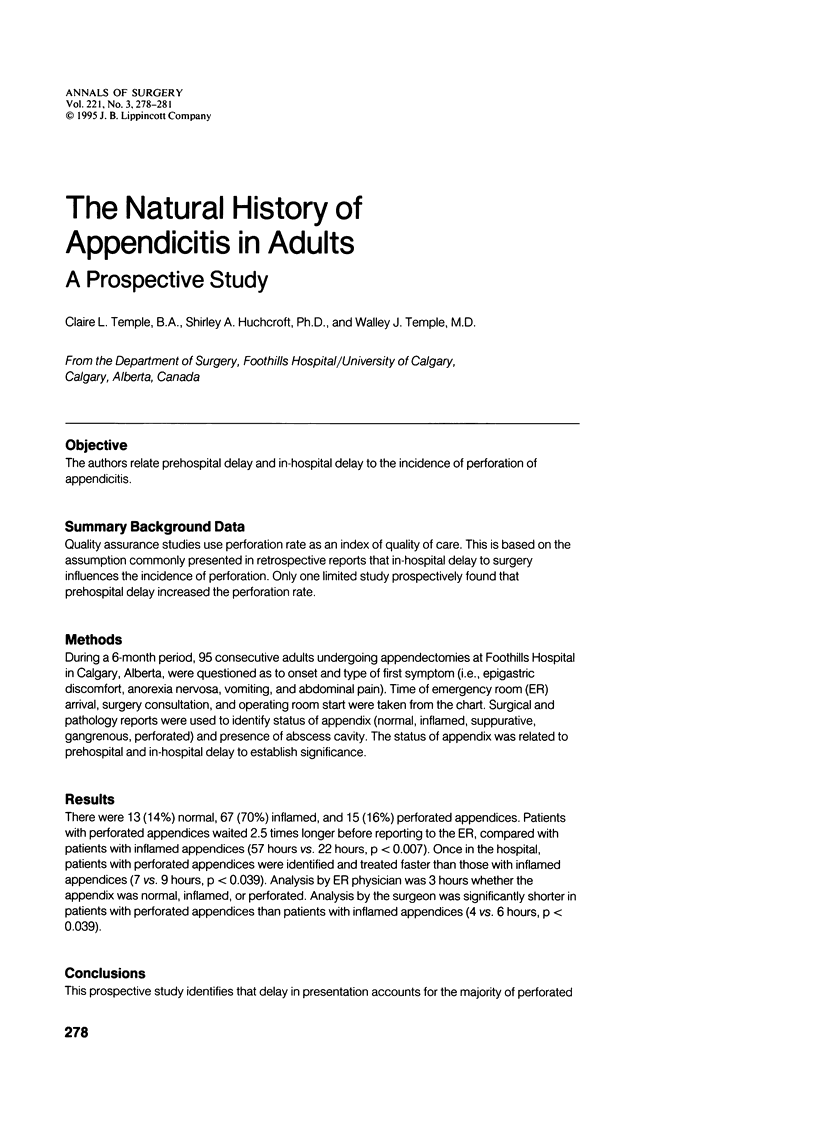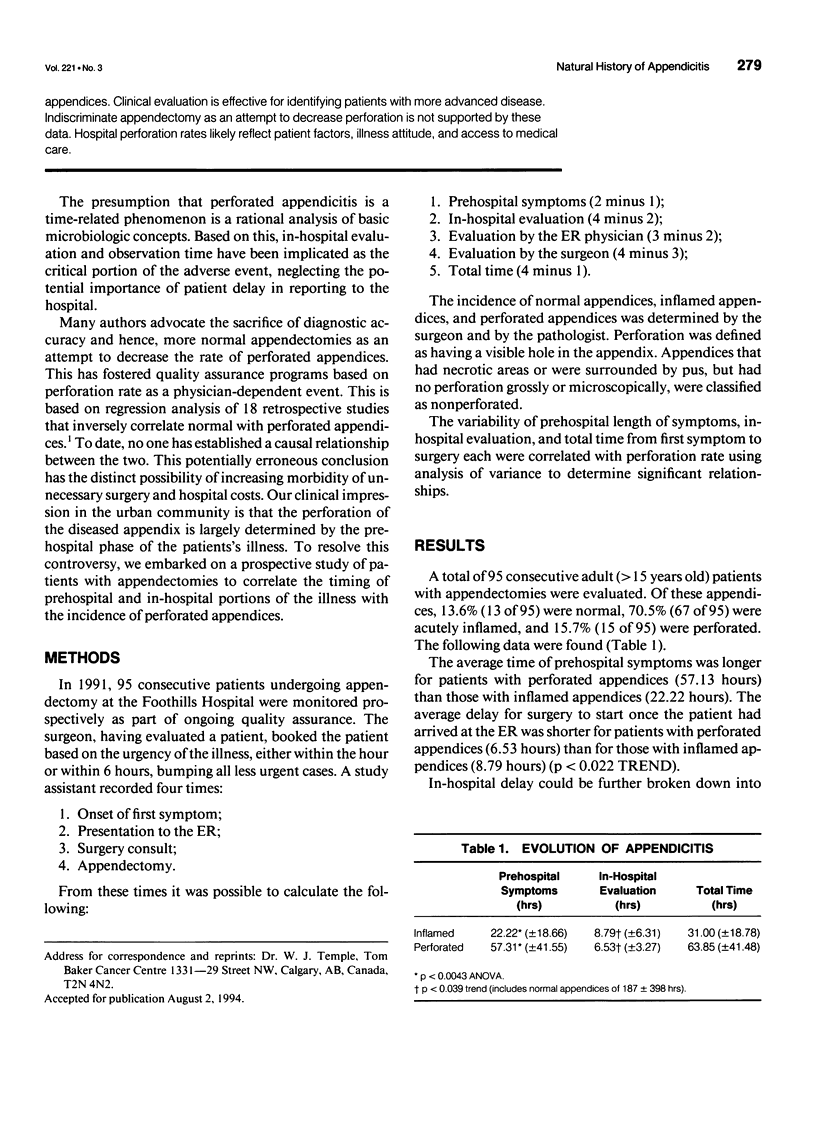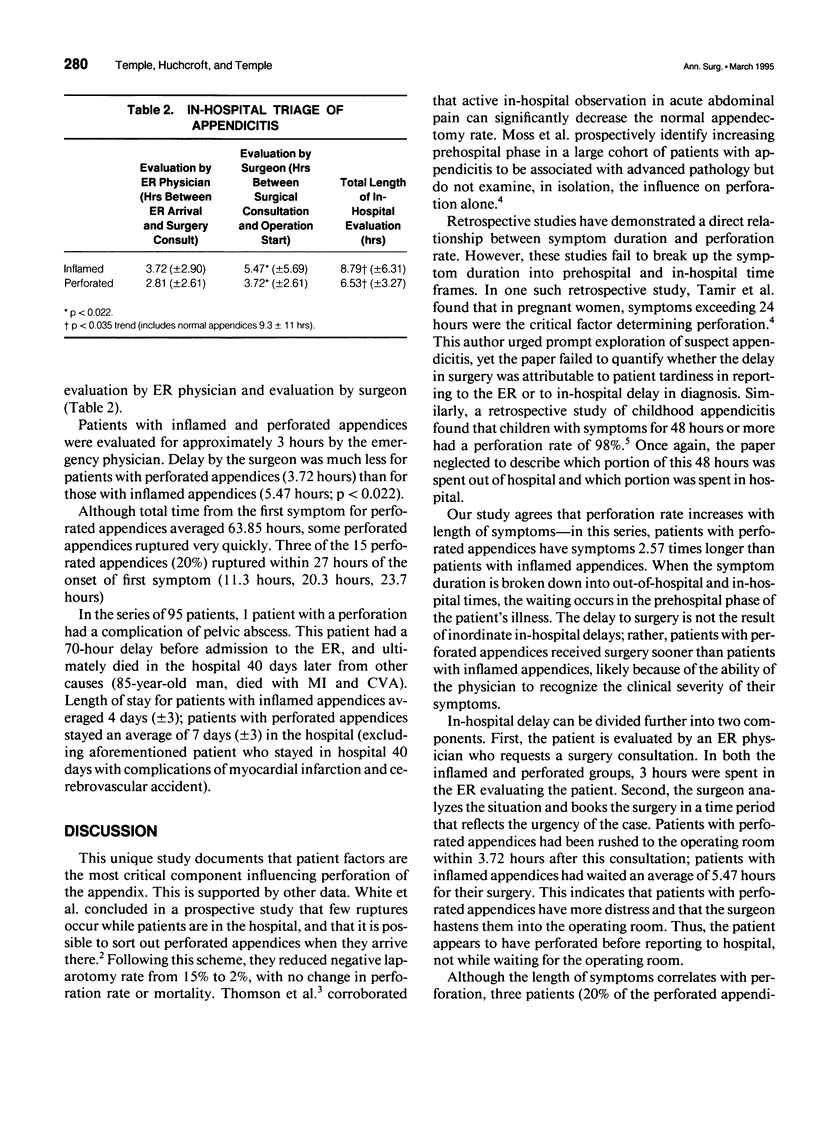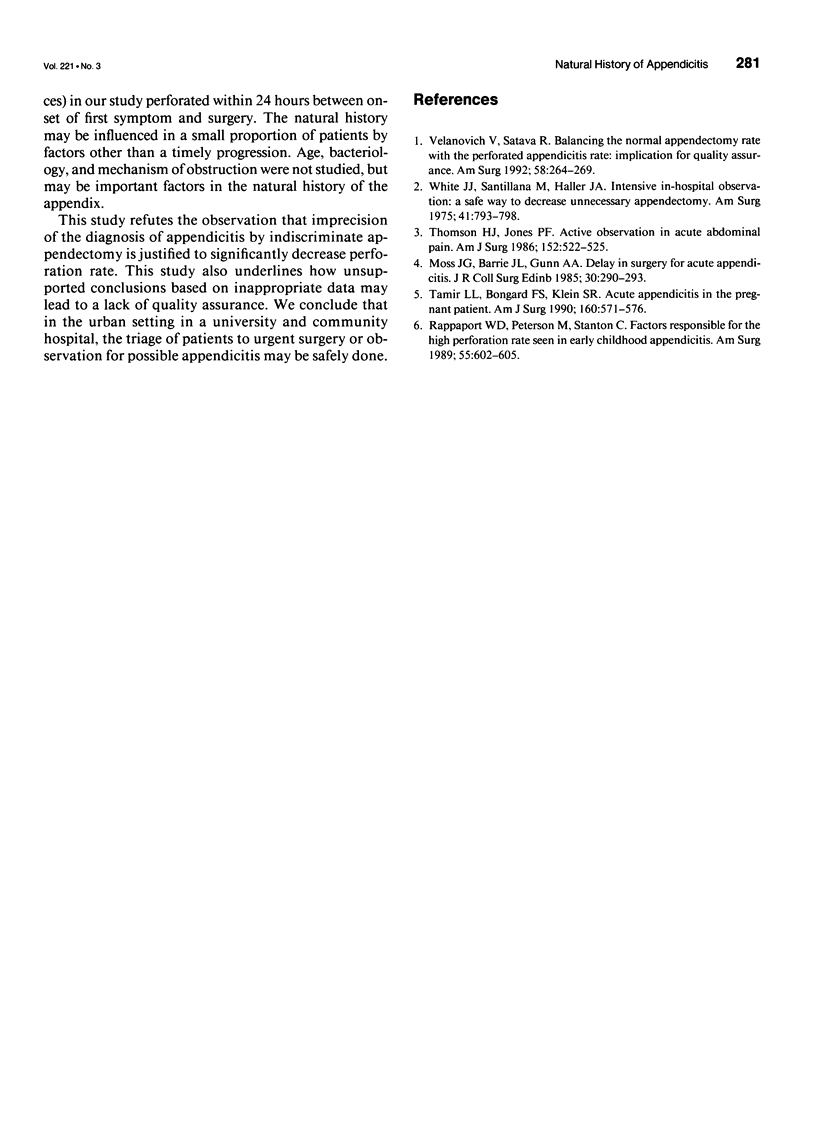Abstract
OBJECTIVE: The authors relate prehospital delay and in-hospital delay to the incidence of perforation of appendicitis. SUMMARY BACKGROUND DATA: Quality assurance studies use perforation rate as an index of quality of care. This is based on the assumption commonly presented in retrospective reports that in-hospital delay to surgery influences the incidence of perforation. Only one limited study prospectively found that prehospital delay increased the perforation rate. METHODS: During a 6-month period, 95 consecutive adults undergoing appendectomies at Foothills Hospital in Calgary, Alberta, were questioned as to onset and type of first symptom (i.e., epigastric discomfort, anorexia nervosa, vomiting, and abdominal pain). Time of emergency room (ER) arrival, surgery consultation, and operating room start were taken from the chart. Surgical and pathology reports were used to identify status of appendix (normal, inflamed, suppurative, gangrenous, perforated) and presence of abscess cavity. The status of appendix was related to prehospital and in-hospital delay to establish significance. RESULTS: There were 13 (14%) normal, 67 (70%) inflamed, and 15 (16%) perforated appendices. Patients with perforated appendices waited 2.5 times longer before reporting to the ER, compared with patients with inflamed appendices (57 hours vs. 22 hours, p < 0.007). Once in the hospital, patients with perforated appendices were identified and treated faster than those with inflamed appendices (7 vs. 9 hours, p < 0.039). Analysis by ER physician was 3 hours whether the appendix was normal, inflamed, or perforated. Analysis by the surgeon was significantly shorter in patients with perforated appendices than patients with inflamed appendices (4 vs. 6 hours, p < 0.039). CONCLUSIONS: This prospective study identifies that delay in presentation accounts for the majority of perforated appendices. Clinical evaluation is effective for identifying patients with more advanced disease. Indiscriminate appendectomy as an attempt to decrease perforation is not supported by these data. Hospital perforation rates likely reflect patient factors, illness attitude, and access to medical care.
Full text
PDF



Selected References
These references are in PubMed. This may not be the complete list of references from this article.
- Moss J. G., Barrie J. L., Gunn A. A. Delay in surgery for acute appendicitis. J R Coll Surg Edinb. 1985 Oct;30(5):290–293. [PubMed] [Google Scholar]
- Rappaport W. D., Peterson M., Stanton C. Factors responsible for the high perforation rate seen in early childhood appendicitis. Am Surg. 1989 Oct;55(10):602–605. [PubMed] [Google Scholar]
- Tamir I. L., Bongard F. S., Klein S. R. Acute appendicitis in the pregnant patient. Am J Surg. 1990 Dec;160(6):571–576. doi: 10.1016/s0002-9610(05)80748-2. [DOI] [PubMed] [Google Scholar]
- Thomson H. J., Jones P. F. Active observation in acute abdominal pain. Am J Surg. 1986 Nov;152(5):522–525. doi: 10.1016/0002-9610(86)90220-5. [DOI] [PubMed] [Google Scholar]
- Velanovich V., Satava R. Balancing the normal appendectomy rate with the perforated appendicitis rate: implications for quality assurance. Am Surg. 1992 Apr;58(4):264–269. [PubMed] [Google Scholar]
- White J. J., Santillana M., Haller J. A., Jr Intensive in-hospital observation: a safe way to decrease unnecessary appendectomy. Am Surg. 1975 Dec;41(12):793–798. [PubMed] [Google Scholar]


